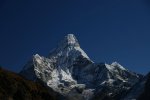eutrophicated1
Designated Acronym-Nazi
Chuck, you old sneaky-Pete, you trying to start a rukus in the ranks here? Discussions have been a little stale of late. Heh heh
C. Beaty;n1130820 said:Whatever lights your fire, Vance. Some get their kicks by jumping out of an airplane without a parachute, some by climbing mountains, others by going over Niagara in a barrel.

